To succeed, a business analyst needs to possess the following skills to greater or lesser degrees depending on the particular position:
Programming
A business analyst must have a solid grasp of Excel for basic data analysis and Structured Query Language (SQL) for data manipulation and retrieval from databases. Additionally, a senior business analyst will often have skills in a statistics-specific programming language like R or a general-purpose programming language like Python, especially if working with machine learning.
Analysis techniques
Business analysts often must be able to utilize analysis techniques from all four common analytical domains: descriptive analytics, diagnostic analytics, predictive analytics, and prescriptive analytics. Important techniques that are especially important include regression analysis, factor analysis, cohort analysis, cluster analysis, and time-series analysis. See our deep dive on business analytics for more.
Analytics process
Business analysts must be familiar with all common steps of the analytics process, including data collection, cleaning, and mining.
Data visualization
More than being proficient at analysis is required: successful business analysts must also be able to create compelling data visualizations (including dashboards) to communicate insights to diverse stakeholders.
Soft skills
In addition to these technical skills, soft skills like communication, project management, teamwork, critical thinking, and leadership are critical for success.
Business and industry expertise
Business and industry expertise are also crucial for a successful business analyst. An analyst is generally expected to understand business fundamentals in areas like marketing, operations, strategy, sales, human resources, and/or finance to align their analysis with business goals and communicate effectively with multifunctional teams. For the same reason, many companies expect business analysts to understand their industry thoroughly.
To develop these skills, many — but not all — business analysts follow a traditional educational path, first earning a bachelor’s degree in a relevant field like finance, business, statistics, or computer science, and perhaps then even pursuing a business analytics master’s degree, either online or in person. Increasingly, however, there are alternative options for those who wish to retain flexibility, haven’t followed a traditional educational path, or don’t have the time or money to pursue a traditional degree. These options include business analytics bootcamps, certificate programs, and short courses. We’ll dive into these options at the end when we make suggestions for how you can get started on your business analytics career path.
In addition to educational qualifications, your typical hiring manager will require that business analytics job candidates have previous work experience, even if they’re applying for an entry-level job. Below are the qualifications that someone with the desired qualifications needs to apply for the business analyst position at Aramark. As you can see, Aramark is looking for someone with existing experience in analytics and facility with many of the key software for business analysts:

